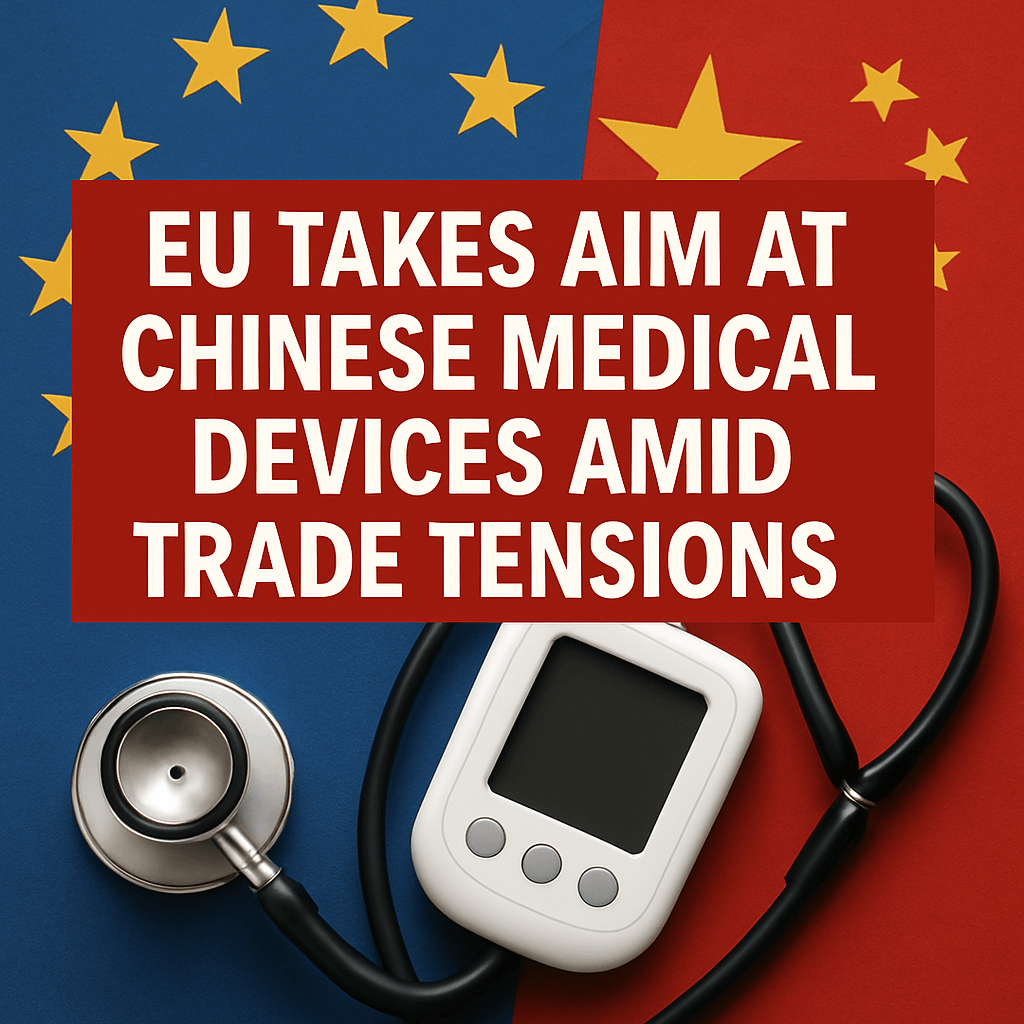EU Takes Aim at Chinese Medical Devices Amid Trade Tensions

Global investors are closely monitoring the ongoing trade tensions between the United States and China as recent developments signal a complicated landscape for international commerce. Accusations have surfaced from both Washington and Beijing regarding violations of last month’s trade agreement, complicating the already tense negotiations. Speculation regarding a potential phone call between U.S. President Donald Trump and Chinese President Xi Jinping adds another layer of intrigue to the situation.
EU’s New Trade Restrictions
However, the U.S. is not the only entity making life difficult for China. On Monday, members of the European Union (EU) voted in favor of a significant restriction: a ban on Chinese companies from participating in public procurement tenders for medical devices valued over 5 million euros (approximately $5.7 million). This blockade will remain in effect for the next five years, marking the first deployment of the EU’s “International Procurement Instrument,” a legislative measure enacted in 2022 aimed at establishing reciprocity in global procurement practices.
Brussels has accused China of engaging in systematic discrimination against European medical providers. A January investigation carried out by the European Commission revealed alarming data: 87% of the sampled Chinese public tenders were found to discriminate against foreign suppliers of medical equipment, either directly or indirectly.
Response from Chinese Authorities
The China Chamber of Commerce to the EU swiftly retaliated, urging Brussels to reconsider its decision. In a statement, the Chamber cautioned that such measures could introduce “new complexity” to the already deteriorating economic and trade relationship between China and the EU. The call for reevaluation reflects a growing concern over the impact of these restrictions on bilateral trade dynamics.
Wider Implications for EU-China Relations
Medical devices are merely one area of contention in the broader trade relationship between Europe and China. In October, the EU imposed tariffs as high as 45% on Chinese electric vehicles, labeling them as unfairly subsidized due to heavy state intervention in their production. In addition, the EU has initiated anti-dumping and anti-subsidy investigations targeting various products including industrial wind turbines, wood flooring, and passenger car tires.
Brussels is vigilant in monitoring the potential rerouting of Chinese exports to European markets, particularly in light of high tariffs imposed by the U.S. on Chinese goods. The EU has previously raised concerns about China’s industrial overcapacity and the risk of a deluge of inexpensive goods threatening local industries. This vigilance is likely to escalate, resulting in more rigorous trade defenses across Europe.
Potential for a ‘Tariff Cascade’
Compounding these challenges is the apprehension from China’s neighboring countries regarding a possible influx of low-cost goods emanating from the world’s second-largest economy. Such fears could instigate a “tariff cascade,” where neighboring nations begin to implement new import tariffs in an effort to protect their domestic industries. For example, both Vietnam and South Korea have recently applied anti-dumping duties on Chinese steel as a defensive measure.
Conclusion
The evolving trade landscape between the EU and China showcases a significant shift toward protective measures that could reshape global supply chains. As the situation develops, stakeholders in international markets will be watching closely to gauge the long-term implications for trade relations and economic collaboration between these major economic players.
Expert Opinion: “The introduction of the International Procurement Instrument is a bold move for the EU, signaling a step towards safeguarding domestic industries and promoting fair competition. Stakeholders should prepare for an increasingly complex regulatory environment,” remarks Dr. Emilia Wong, Trade Policy Analyst at the European Institute.